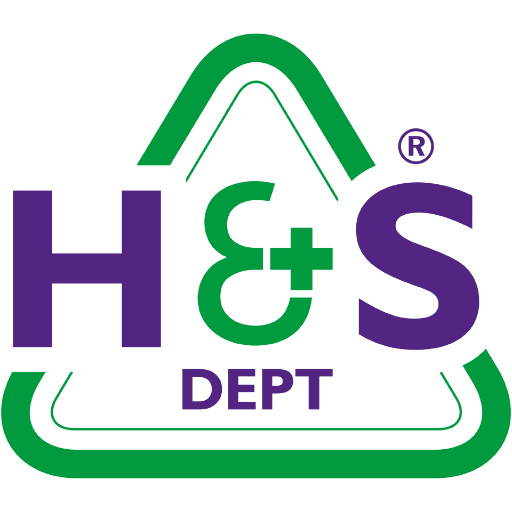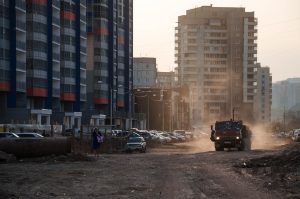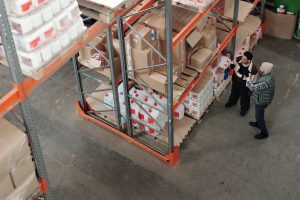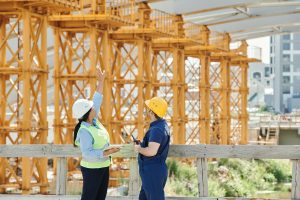Silica dust inspections: are you prepared?
Last month, HSE began a series of inspections designed to reduce workplace exposure to silica dust. Inspectors will visit a range of manufacturers to check that employees understand the risks, and that employers have appropriate control measures in place.
Silica is a naturally occurring substance found in rocks, stone, sand and clay. During certain industrial processes, these materials release airborne particles of respirable crystalline silica (RCS).This is especially common in brickmakers, tile manufacturers and foundries.
RCS is extremely dangerous. An estimated 600,000 UK workers are exposed to silica dust every year, and many go on to develop serious conditions such as silicosis, chronic obstructive pulmonary disease and lung cancer. 500 construction workers die each year from silicosis alone, making silica the industry’s second deadliest substance after asbestos.
As an employer, it is your responsibility to limit workplace exposure to silica dust. COSHH (Control of Substances Hazardous to Health) regulations require you to employ effective control measures such as LEV (Local Exhaust Ventilation), and to provide PPE where necessary.
If your risk assessments don’t explicitly mention silica and it is a relevant risk, you should update them before an inspection takes place. If you’re unsure about anything, don’t hesitate to get in touch.
Don’t underestimate the dangers of crushing injuries
Earlier this month, a cheesemaker was crushed to death after an accident at a warehouse in Lombardy. Giacomo Chiapparini was inspecting his produce when a shelf collapsed, causing thousands of wheels of cheese to fall on him. Rescuers worked for 12 hours to move the debris, but were unable to save the 75 year old.
While few UK workers are at risk from falling cheese, crushing injuries are only too common. HSE’s most recent statistics show that, of the 135 workers killed in 2022/23, 12 died as a result of being trapped under an object. These deaths occurred mostly in construction and manufacturing, but workers in other industries are also at risk.
Under the wrong circumstances, almost any heavy object can be a crushing hazard. Check offices for wobbly furniture, and fix or remove anything that seems unstable. If an crushing incident does occur, remember to report it under RIDDOR.
What can we learn from the latest workplace fatality figures?
HSE has published its annual report on workplace fatalities and, as usual, the results paint a mixed picture. While overall deaths have stayed low, a number of areas are lagging behind. Certain industries remain disproportionately dangerous, and certain types of accident remain all too common.
Between April 2022 and March 2023, 135 employees were killed at work. This is an increase of 12 compared to the previous year. 68 members of the public also lost their lives, bringing the total number of workplace fatalities up to 203.
Once again, the most dangerous industries were construction, agriculture and manufacturing, accounting for over 60% of all fatalities. Although the construction industry recorded the most deaths (45), agriculture remains by far the most dangerous industry for any given worker. Its death rate is around 8 per 100,000, almost four times higher than construction and 20 times higher than the national average.
The most common causes of death were also unchanged. 40 workers died after falling from height, 29 were struck by falling objects and 20 were killed by moving vehicles. Crushing deaths were also common, accounting for 12 fatalities during the year.
While these figures compare favourably by international standards, they are no cause for complacency. Fatalities may have fallen over the last few decades, but they have plateaued in recent years. This suggests that modern safety measures are generally effective, but may be failing to address certain issues. If we want to reduce fatalities to zero, we need to identify and fix these blind spots.
A definite area for improvement is the safety of self-employed workers. Despite making up only 15% of the workforce, these employees account for a third of all workplace fatalities. This is especially noticeable in already dangerous industries. The death rate for self-employed agricultural workers is 11 per 100,000, making them the most vulnerable group in the country.
A lot of this comes down to isolation. With no employer to check on them, it’s much easier for self-employed workers to ignore or forget safety protocols. These workers are also less likely to receive up-to-date health and safety information, or to attend workplace safety training.
If you use self-employed contractors, it’s important not to neglect their well-being. Include them in your risk assessments and share any relevant safety information with them. If you need any advice on keeping your employees out of harm’s way, we’re always here to help.
Do your risk assessments include remote workers?
Over the last few years, hybrid working has become the norm in many industries. This trend looks set to continue thanks to new legislation currently working its way through parliament.
The Employment Relations (Flexible Working) Bill will abolish the 26 week waiting period for flexible working requests, allowing employees to make these requests from day one. With half of all workers reported to be planning to take advantage of these changes, employers need to prepare for a rapid increase in remote working (although you will still have the right to deny requests if there is a good business reason to do so).
Like any significant change, this will have major implications for health and safety. Under the Health and Safety at Work Act 1974, you have the same duty of care to remote employees as you do to those working on site. It can be much harder to meet these obligations from a distance, so it’s important to be prepared.
Start by updating your risk assessments to include remote workers. You should ensure that homeworking equipment complies with DSE standards, and that remote workstations are comfortable and ergonomic. If necessary, consider providing remote workers with an appropriate chair or desk.
Mental health should also be taken into account. Remote workers often feel isolated, creating an increased risk of anxiety and depression. Put a system in place to ensure regular check-ins, and be sure to include remote workers in any social events.
Many remote workers also struggle to balance work and home obligations. Try to avoid sending them emails outside of working hours but, if you need to, make it clear that you don’t expect immediate responses if you can.
Accreditation of the month: Constructionline
While it may not be as well-known as CHAS or SMAS, Constructionline is a valuable resource for those working in construction. It started life as a government database of prequalification data, but was sold to a private buyer in 2015. Today, it is home to 45,000 suppliers and over 4,000 buying organisations.
Its Marketplace platform is one of the most advanced in the industry, matching buyers and suppliers in a matter of seconds. Constructionline handles the entire prequalification process, giving buyers peace of mind when choosing a supplier.
Although Constructionline isn’t an accreditation in itself, signing up allows you to apply for the Acclaim scheme. This is an SSIP recognised award, judged by an online assessment of your health and safety documentation. Constructionline makes this accreditation visible and searchable, giving you the edge over other suppliers.
Like any SSIP-backed scheme, gaining Acclaim accreditation isn’t easy. You’ll need to submit detailed proof of compliance, and this can be extremely time-consuming. Don’t worry though, we can help.
Whether it’s Acclaim, CHAS or any other accreditation, we can take care of your entire application. We’ll make sure all necessary documents are submitted, giving you the best possible chance of success. Get in touch to find out more.






